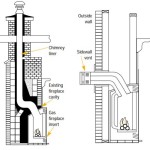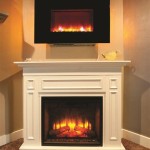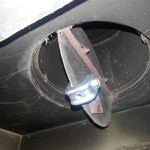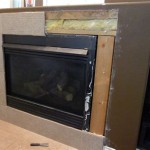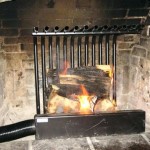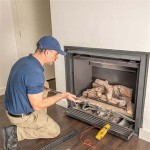```html
Rustic Fireplace Surround Ideas
A fireplace serves as a focal point in many homes, providing warmth and ambiance. Enhancing this feature with a rustic surround can significantly elevate the interior design, creating a cozy and inviting atmosphere. The term "rustic" encompasses a range of styles, from farmhouse chic to rugged, natural aesthetics. Selecting the appropriate materials and design elements is crucial to achieving the desired effect. This article explores various rustic fireplace surround ideas, offering insights into materials, design considerations, and implementation.
Choosing the Right Materials
Material selection is paramount in achieving a rustic aesthetic. The natural properties of the material contribute significantly to the overall appearance and feel of the fireplace surround. Several materials are commonly employed in rustic fireplace designs, each possessing unique characteristics and advantages.
Reclaimed Wood: Reclaimed wood is a popular choice for rustic fireplace surrounds. It offers a sense of history and character, often displaying imperfections such as nail holes, knots, and weathered textures. Sourcing reclaimed wood from old barns, factories, or demolition sites provides a sustainable and environmentally conscious option. The wood's patina, developed over years of exposure, adds depth and visual interest to the fireplace. Different types of reclaimed wood, such as barnwood, pallet wood, and timber, offer varying degrees of texture and color.
When using reclaimed wood, it's essential to ensure it is properly treated and sealed to prevent issues such as insect infestation or moisture damage. A clear sealant can protect the wood while preserving its natural appearance. The installation process might require additional attention due to the irregular shapes and sizes of reclaimed wood pieces.
Stone: Stone, whether natural or manufactured, provides a timeless and durable option for rustic fireplace surrounds. Natural stone, such as fieldstone, river rock, or slate, offers a unique and organic appearance. The variations in color, texture, and size create a visually appealing and rugged aesthetic. Manufactured stone, also known as faux stone or veneer stone, provides a cost-effective alternative that mimics the look of natural stone. It is typically lighter in weight and easier to install compared to natural stone.
Different stone arrangements can create different effects. A dry-stacked stone surround conveys a more rugged and informal look, while a mortared stone surround offers a more refined and structured appearance. Consider the scale of the stone and the size of the fireplace when making a selection. Larger stones can create a bolder statement, while smaller stones can offer a more subtle and intricate design.
Brick: Brick offers a classic and versatile option for rustic fireplace surrounds. Its inherent texture and warm color tones complement a variety of interior design styles. Reclaimed brick, similar to reclaimed wood, provides a sense of history and character. Its imperfections, such as chipped edges and weathered surfaces, add to its rustic appeal. New brick can also be used effectively, especially when treated with techniques such as whitewashing or staining to achieve a more aged appearance.
The brick pattern can significantly impact the overall design. A traditional running bond pattern provides a classic and timeless look, while a herringbone pattern adds a touch of sophistication and visual interest. The color of the mortar also plays a role in the final aesthetic. A light-colored mortar can create a softer and more subtle look, while a dark-colored mortar can emphasize the individual bricks and add depth to the design.
Concrete: Concrete, often associated with modern design, can also be incorporated into rustic fireplace surrounds. Its versatility allows for various textures and finishes, making it suitable for creating a unique and contemporary rustic look. Concrete can be poured in place to create a seamless surround or used in the form of precast panels or blocks. Staining, stamping, or texturing the concrete can further enhance its appearance and achieve the desired rustic aesthetic.
A concrete fireplace surround can be paired with other rustic elements, such as reclaimed wood or metal accents, to create a balanced and harmonious design. The industrial feel of concrete can be softened with warmer tones and natural textures. Consider adding decorative elements, such as exposed aggregate or embedded stones, to further personalize the concrete surround.
Design Considerations for Rustic Fireplace Surrounds
Beyond material selection, several design considerations contribute to the overall success of a rustic fireplace surround. Factors such as scale, proportion, color palette, and decorative elements should be carefully considered to create a cohesive and visually appealing design.
Scale and Proportion: The fireplace surround should be appropriately scaled to the size of the fireplace and the room it occupies. A surround that is too large can overwhelm the space, while a surround that is too small can appear insignificant. Consider the height, width, and depth of the surround in relation to the fireplace opening and the surrounding walls.
Proportion is equally important. The elements within the surround, such as the mantel, hearth, and side panels, should be in harmony with one another. A well-proportioned surround will create a sense of balance and visual appeal. Use visual aids, such as sketches or renderings, to help visualize the final design and ensure that the scale and proportions are appropriate.
Color Palette: The color palette of the fireplace surround should complement the existing interior design. Natural and earthy tones are commonly used in rustic designs, such as browns, greens, grays, and creams. Consider using a mix of textures and shades to add depth and visual interest. A monochrome color scheme can create a sophisticated and understated look, while a bolder color palette can add personality and vibrancy to the space.
The color of the fireplace surround should also be considered in relation to the color of the walls and other architectural elements in the room. A contrasting color can create a focal point, while a complementary color can create a more cohesive and harmonious design. Consider using natural light to evaluate the colors and textures of the materials, as they may appear different under artificial light.
Mantel Design: The mantel is a key element of the fireplace surround, providing a surface for displaying decorative items and adding visual interest. A rustic mantel can be crafted from reclaimed wood, a thick slab of stone, or a combination of materials. The design of the mantel should complement the overall style of the fireplace surround and the room.
A chunky wooden mantel adds warmth and character to the fireplace, while a sleek stone mantel offers a more contemporary rustic look. Consider the height and depth of the mantel in relation to the fireplace opening and the surrounding walls. A mantel that is too high can appear awkward, while a mantel that is too low may not provide sufficient space for decorative items. The mantel can be stained, painted, or left natural to showcase the beauty of the material.
Hearth Design: The hearth is the area in front of the fireplace opening, providing a safe and functional space for protecting the flooring from sparks and embers. A rustic hearth can be made from stone, brick, or concrete. The size and shape of the hearth should be proportional to the fireplace and the room. A raised hearth can create a more dramatic and visually appealing effect, while a flush hearth offers a seamless and unobtrusive design.
The material of the hearth should be durable and heat-resistant. Stone and brick are excellent choices for hearth materials due to their natural properties. Concrete can also be used, but it should be properly sealed to prevent staining and damage. Consider adding a decorative border or inlay to the hearth to further enhance its appearance.
Decorative Elements: Decorative elements can add personality and character to a rustic fireplace surround. Consider incorporating elements such as iron hardware, exposed brick, or natural stone accents. Rustic artwork, vintage accessories, and natural elements, such as branches or pinecones, can further enhance the overall design. Avoid cluttering the mantel with too many items, as this can detract from the overall aesthetic.
Incorporate lighting to highlight the fireplace surround and create a warm and inviting atmosphere. Consider using sconces, spotlights, or recessed lighting to illuminate the mantel and hearth. The lighting should be soft and diffused to avoid harsh shadows and glare. Candles and lanterns can also be used to add a touch of ambiance and warmth to the space.
Implementing Rustic Fireplace Surround Ideas
The implementation phase involves the actual construction or installation of the rustic fireplace surround. This process requires careful planning, attention to detail, and adherence to safety guidelines. Whether embarking on a DIY project or hiring a professional contractor, understanding the implementation steps is crucial.
Planning and Preparation: Before starting the installation process, carefully plan the design and gather all necessary materials and tools. Measure the fireplace opening and the surrounding walls to ensure accurate dimensions. Create a detailed plan or blueprint that outlines the design and specifications of the surround. Obtain any necessary permits or approvals from local authorities.
Prepare the area by removing any existing fireplace surround or decorative elements. Clean the surface thoroughly and ensure that it is level and stable. Protect the surrounding flooring and furniture with drop cloths or plastic sheeting. Gather all necessary safety equipment, such as gloves, goggles, and a dust mask.
Installation Process: The installation process will vary depending on the materials and design of the fireplace surround. Follow the manufacturer's instructions for installing manufactured stone or veneer. When using natural stone or brick, consider hiring a professional mason to ensure proper installation and structural integrity. Use appropriate adhesives, mortars, and fasteners to secure the materials to the fireplace and the surrounding walls.
Ensure that the fireplace surround is properly vented to prevent the build-up of carbon monoxide. Install a smoke detector and carbon monoxide detector in the vicinity of the fireplace to ensure safety. Allow the mortar or adhesive to cure completely before using the fireplace.
Finishing Touches: After the installation is complete, add the finishing touches to enhance the appearance of the fireplace surround. Apply a sealant or protectant to the materials to prevent staining and damage. Install the mantel and hearth, ensuring that they are securely attached. Add decorative elements, such as artwork, accessories, and lighting, to personalize the space.
Inspect the fireplace surround thoroughly to ensure that all elements are properly installed and functioning correctly. Clean the area and remove any debris or construction materials. Enjoy the warmth and ambiance of your newly completed rustic fireplace surround.
```
A Rustic Fireplace Like Really Is Very Good Idea Architectural Digest

Diy Rustic Mantel Farmhouse Fireplace Decor Farm House Living Room

Pin By Trisha Vallee On Home Rustic Fireplace Mantels Fireplaces

10 Rustic Fireplace Mantel Ideas Blog Red Door

A Rustic Fireplace Like Really Is Very Good Idea Architectural Digest

50 Cozy Fireplace Ideas Best Mantel Decor

19 Amazing Diy Fireplace Mantel Ideas To Inspire You

30 Top Fireplace Mantel Decor Ideas For Every Interior Displate Blog

35 Fireplace Mantel Ideas For A Heavenly Hearth

40 Fabulous Fireplace Design Ideas For Any Budget Or Style
Related Posts

